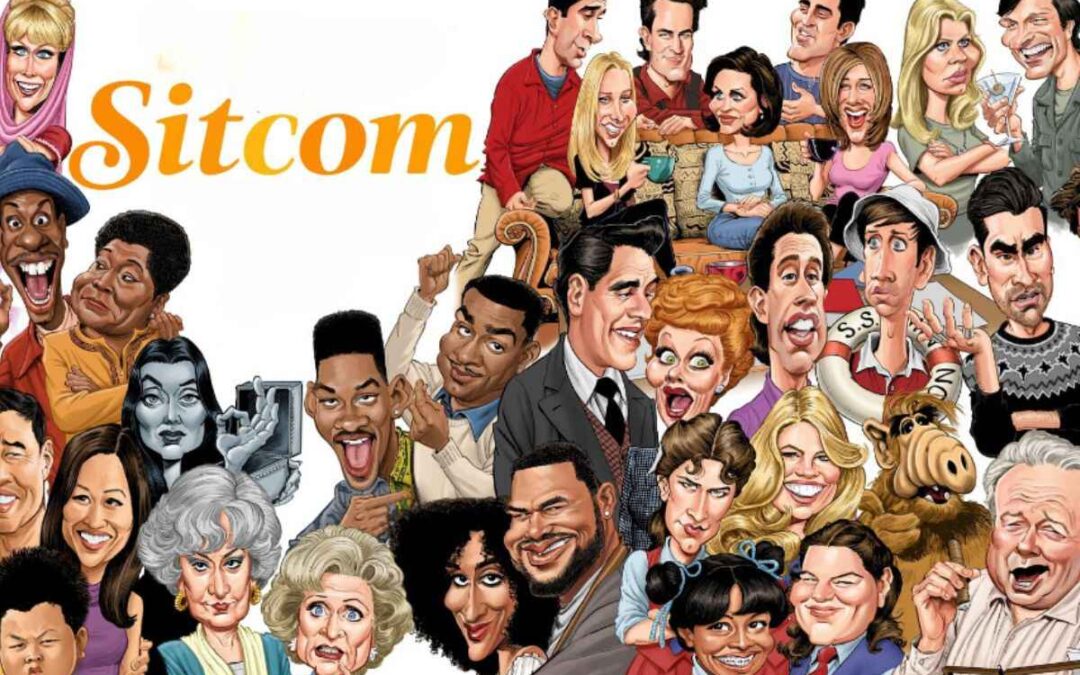It’s hard to believe that just two decades ago, a sitcom meant a studio audience, a laugh track, and characters who rarely changed, no matter what happened to them. Fast forward to today, and shows like Ted Lasso are rewriting the rules — blending humour with heartbreak and delivering stories that are less about punchlines and more about people.
So what’s different? Why have sitcoms changed so radically — and why are we still watching, even when the chuckles don’t sound the same?
Sitcoms of the ’90s: Designed for Comfort
In the 1990s and early 2000s, sitcoms such as Friends, Seinfeld, and Everybody Loves Raymond were a cultural institution. They provided a familiarity: 20-minute episodes, a recurring set, and characters who may struggle through issues. Still, they always found themselves back in the same spot, in the same beat, by the credits.
What appealed to audiences was the consistency. You could tune in to Friends halfway through and still be one of the gang. The dramas were seldom serious. The punchlines hit like clockwork. The viewers laughed — not because the show altered their existence, but because it made their day less complicated.
But even then, fissures began to appear. Audiences started demanding more than a repeat. They demanded characters to develop, stories to get richer, and humour to have a message.
Streaming Changed Everything
The advent of streaming did more than shift how we consumed shows — it redirected what types of stories could be told. Released from the restrictions of network timing and commercials, creators experimented with tone, structure, and subject matter.
The Office and Parks and Recreation pioneered this change. They continued to be funny but let their characters develop over the years. Jim and Pam weren’t a will-they-won’t-they couple. Michael Scott wasn’t a walking punchline — he was usually tragic and occasionally even moving. This gradual change laid the groundwork for another type of sitcom in which laughter was no longer the sole objective.
Also Read…
Step in Ted Lasso: The Sitcom That Gets You Thinking (and in Tears)
Few people who watched Ted Lasso when it launched in 2020 anticipated that a program based on an American football coach running a British football team would be so emotionally resonant. But the show soon dispelled the impression it was merely fish-out-of-water humour.
What’s so great about Ted Lasso is his candour. The wit is there — warm, offbeat, and frequently unexpected — but so are flashes of genuine vulnerability. The characters struggle with anxiety, failure, identity, and forgiveness. And unlike traditional sitcoms, those struggles aren’t resolved in 22 minutes.
The show makes us laugh and feel, often in the same scene. It’s not afraid to pause for silence, to let a character break down, or to hold off on a resolution. That kind of patience and depth wasn’t common in sitcoms a decade ago. Now, it’s what audiences crave.
The Characters Are Changing, Too
The most notable variation between older and newer sitcoms is how characters are defined. Characters in older shows tended to be caricatures — neat freaks, ladies’ men, cynics. They were sympathetic but hardly ever surprising.
Sitcoms have begun to blur those lines now. Rebecca from Ted Lasso and Ava from Abbott Elementary are not simplistic characters. They’re flawed, funny, strong, and changeable. They’re as multi-dimensional as real people, not what can fit into a joke. And audiences take notice. We’re no longer finding humour in characters — we’re growing up with them.
Final Thought: Sitcoms Grew Up Because We Did
The development of sitcoms is not simply a matter of industry trends or platform shifts — it’s a matter of us. We, as audiences, have become more emotionally intelligent. We desire to be made to laugh and be challenged, comforted, and occasionally surprised.
Shows like Friends will never go away — they are a golden age of old-school comedy. But the emergence of character-based, emotionally astute shows like Ted Lasso heralds something different: sitcoms that entertain but also connect. Perhaps that’s why we’re still tuning in. Because now, the greatest comedies don’t simply make us laugh — they make us understand.
Writer – Subham Choudhary

